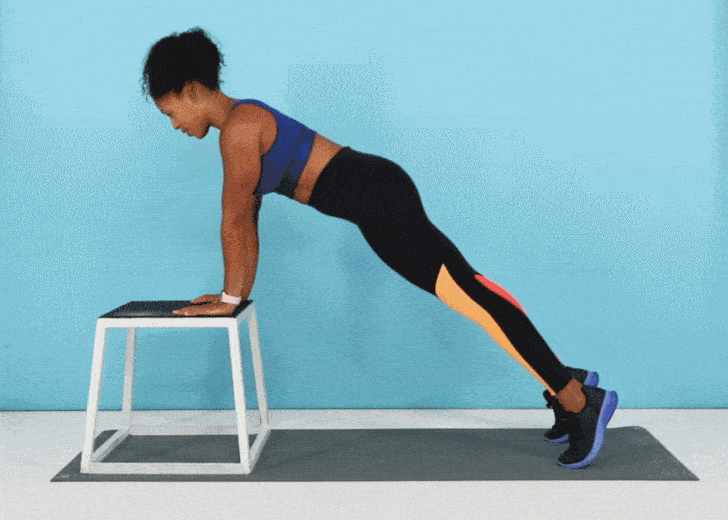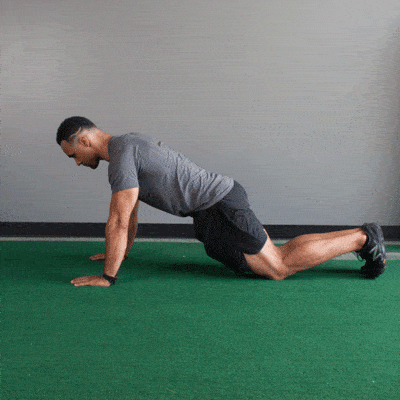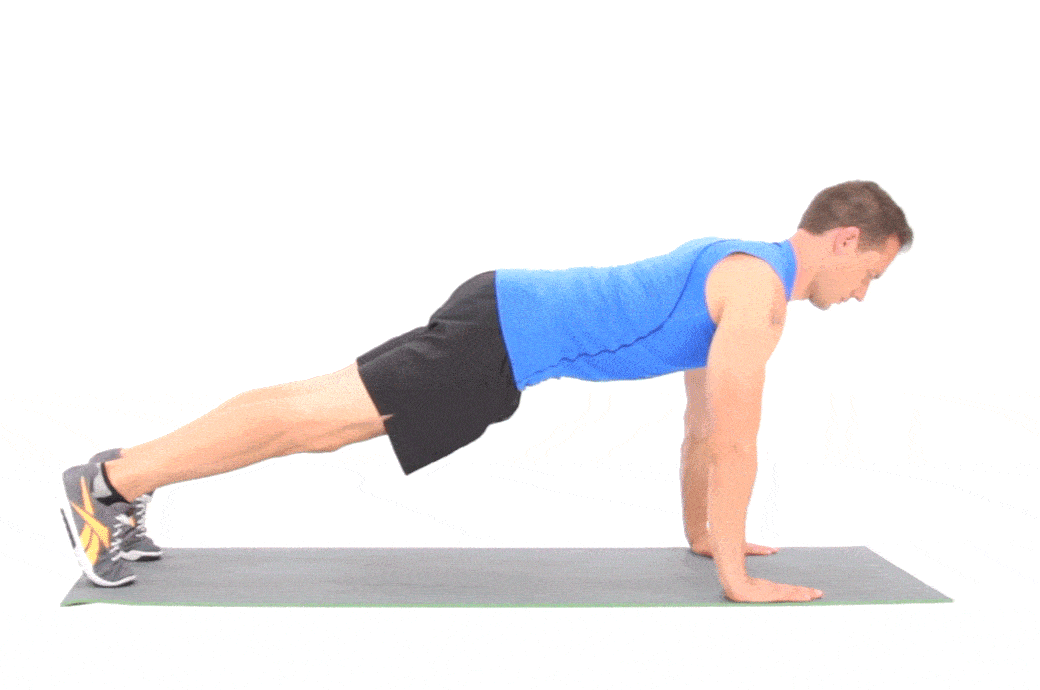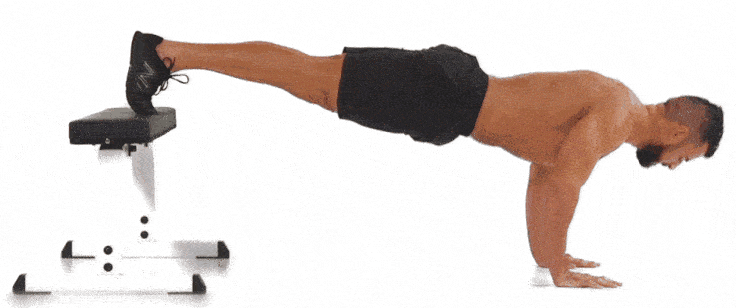New Harvard Study: “Reduce Your Heart Disease Risk with Push-ups”

Yes, the simple push-up has been shown to reduce your heart disease risk. Statistically, you have a greater chance of dying from heart disease than anything else. Here’s how to choose the right push-up for you.

Credit: Amazecraze.com
GIVEN THAT heart disease is the number 1 killer of people worldwide, wouldn’t it be mighty fine if you had a very simple way to assess and then reduce your heart disease risk?
Good news — you can!
What am I talking about?
Push-ups.
Now please don’t get turned off if the only push-up you’ve ever done is to push yourself away from the dining table. This one simple movement could be a life safer, and in a bit I’m going to show you how to make them not-so-hard through a progressive exercise selection that you can do.
There’s not many things more important than to reduce your heart disease risk.
Push-ups and Your Heart Disease Risk
Your heart disease risk seems to negatively correlate with the number of push-ups you can do; meaning, more push-ups results in less heart disease.
That’s the findings of a Harvard University study published in Jama on February 15, 2019. It showed that middle-aged men who can’t complete 10 push-ups are at much higher risk of heart attacks or strokes. Being able to do 11 or more is the sweet spot:
“Participants able to perform 11 or more push-ups at baseline had significantly reduced risk of subsequent cardiovascular disease events,” the researchers wrote.
The risk of heart disease continues to lessen as your capacity for push-up reps increases.
The study found that being able to complete between 21 and 30 push-ups meant men had around a quarter of the risk of getting coronary artery disease or heart failure compared to those not able to do 10 push-ups.
Being able to do more than 40 push-ups was associated with a 97% reduction in risk of cardiovascular disease over the next 10 years, the researchers said.
- 10 push-ups or less — not good for your heart
- 11 – 20 — your risk for heart disease is reduced
- 21 – 30 — the risk is 75% less than the less than 10 rep group
- 40+ — the risk is 97% less than the less than 10 rep group
Surprisingly, push-ups are a better predictor of future heart health than established fitness benchmarks like running, and were simple to complete, making them ideal for short periods of exercise.
Study author Justin Yang, from Harvard’s TH Chan School of Public Health said:
Our findings provide evidence that push-up capacity could be an easy, no-cost method to help assess cardiovascular disease risk in almost any setting. Surprisingly, push-up capacity was more strongly associated with cardiovascular disease risk than the results of submaximal treadmill tests [where subjects run while their breathing is measured].
This is the first study to show push-ups can be an effective test for future cardiovascular disease risk, but it would be helpful if its findings were proven in other groups, including women.
Is Heart Disease Different for Women
Apparently so.
According to the research compiled by Everyday Health, there are at least eight ways heart disease is different in women than men:
- Signs of a heart attack — women have less or no chest pain during a heart attack compared to men.
- Plaque build-up — this and the resulting atherosclerosis (hardening of the arteries) were at much greater risk for major adverse cardiac events in women (such as a heart attack) than men with extensive plaque of any kind.
- Metabolic metrics — A large waist size, high triglycerides, high blood sugar, high cholesterol,and high blood pressure (collectively known as metabolic syndrome) will raise anyone’s risk of heart disease and stroke, but these risk factors are particularly troublesome for women’s hearts.
- Depression — Women with a history of depression have three times the risk for heart disease than do men.
- Smoking — Cigarette smoking is 25 percent more likely to lead to heart disease in women than in men.
- Estrogen levels — Menopause increases a woman’s chances of developing cardiovascular disease. Women lose estrogen during menopause and estrogen levels affect heart health. Age also matters. As women get older, they’re more likely to have other conditions such as diabetes, arthritis, or osteoporosis.
- Aspirin — Doctors commonly recommend aspirin for both men and women, but for different reasons. Research has shown aspirin therapy can reduce the risk of first heart attacks in men, but in women, it reduces the risk of first strokes.
- Pregnancy complications — Preeclampsia (high blood pressure and possibly protein in urine during pregnancy or after delivery) doubles a woman’s risk of stroke, heart disease and dangerous clotting in veins during the five to 15 years after pregnancy.
That’s useful information for women, because any one of those eight might reduce your heart disease risk. But do push-ups reduce the risk of heart disease for women as it does for men?
Not sure; hasn’t been tested. But why wouldn’t they?
A systematic analysis of Epidemiological studies was published in Jama in 2009 that indicated an inverse association between cardiorespiratory fitness and coronary heart disease or all-cause mortality in both men and women. This means that men and women who do cardio training have less heart disease.
Why would it be different for push-ups?
So, women, do some push-ups.
Next up is how to do them to reduce your heart disease risk.
Your Push-up Progression Training
So, how many push-ups can you do?
Many of my male friends, including those who were former athletes, can’t do ten proper push-ups. My female friends say something like, “Can’t I get stronger just by watching you do them?”.
The following images show you a progression ranging from assisted push-ups to regular push-ups and beyond.
Beginners who can’t do more than five “regular” push-ups
If you can’t do more than five regular push-ups, cut the load. The “load” is your body weight. In this case, the lower your feet are relative to your chest, the less load your chest, shoulders and triceps have to push.
Choose to begin with wall push-ups or knee push-ups based on how many you can do now. You want to be able to do at least ten reps of three sets with whichever push-up version you choose.

Not so fast, grasshopper

Still moving too fast, unless just warming up.

You can increase the load a bit by curling your heels to your glutes.
As you get stronger you can increase the difficulty of an exercise like push-ups by:
- Doing more reps
- Doing more sets
- Doing the reps slowly
- Reducing the rest period between sets
Elbow Alignment: Keep them at a 45 degree angle from your body. Figure that by first touching your elbows to your side once you’re in push-up position, and then flaring them out half way between against your body and perpendicular to it (completely flared out).
Breathing: Inhale during the eccentric phase (muscles lengthen as you lower yourself toward your hands). Exhale during the concentric phase (pushing away from your hands, which in a push-up shortens the muscles as they contract).
Intermediates who can do at least five push-ups
If you can do at least five push-ups in proper form, do them as shown below. Be able to do 19 reps before you move on to advanced push-ups. To get more reps, put your knees on the floor…

Nice pacing and good form.
Advanced who can do 20 or more push-ups in good form
Once you can do 20 push-ups in good form, you may want to increase the load to challenge yourself and build more strength. As mentioned, you cut the load by elevating your chest above your feet (wall push-up). To increase the load, bring your chest below your feet, or put some weight into a backpack.

I used to be built like him. Then I woke up.

Might be a bit heavy.
When should you do your push-ups?
It depends on you.
A. If you can consistently program push-ups into your exercise schedule or begin one that has you doing a series push-up sets, at least three sets to start, at least three times per week, then do that.
B. If you can’t do option A, then do your push-ups all throughout the day. Mini exercise sessions add up to real strength and muscle gains. Set your smart phone to chime every hour, and when it does get up and do one set of your push-ups. Shoot for five sessions/sets per day. Because you’re not overloading the muscles involved all at once as you would in option A, you can do this program on consecutive days.
Your Takeaway
To reduce your heart disease risk, remember these four things:
- The more push-ups you can do the lower your risk of succumbing to the number 1 killer in the world, heart disease.
- Yes, this means you too, women — even though the seminal study on this was done with men, you also have a chests and hearts, and building the muscle in the former will improve the health of the latter.
- Choose the push-up variation that isn’t so hard to do that you won’t do it. Compliance and progression are the two requirements of muscle and strength improvements.
- If you aren’t inclined to schedule long exercise sessions at home or at the gym, have your phone signal you to drop to the floor every hour for at least five hours per day to do one set of push-ups.
Last Updated on February 16, 2019 by Joe Garma


